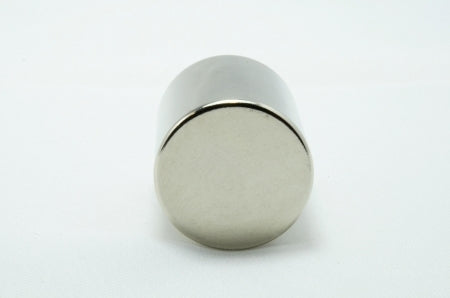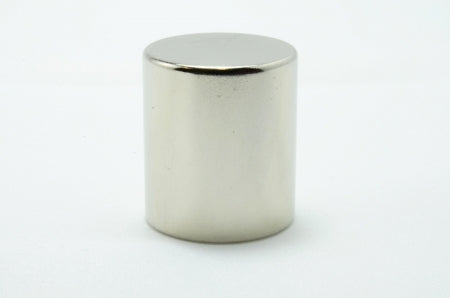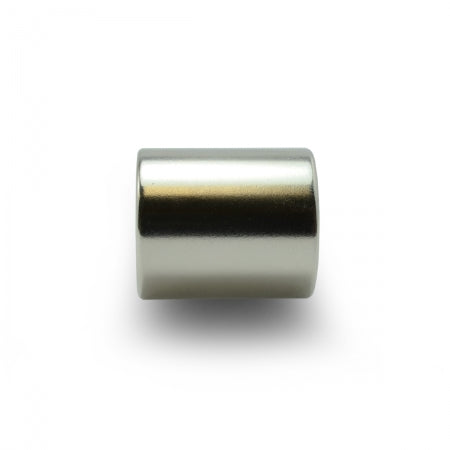Permanent Customer.
Website - 10/10
Products - 10/10
Checkout - 10/10
Delivery - 10/10
Product code: 21010



Prices are GST Incl.
Request a Quote for Bulk OrdersAustralia's Leading Supplier
Shipping Worldwide*
30 Day Returns
Same Day Dispatch*

This rare earth cylinder has a diameter of 22 mm and a height of 25.4mm or one inch. It has a magnetic flux reading of 5781 Gauss and a pull force of 19.05 kilos. Its part number is 21010.
Magnetism and magnets including neodymium cylinders 22mm x 25.4mm magnets are a natural fit in the schooling or educational environment. From the first demonstration to first year students of the unique powers of magnets to move objects without making contact, to magnetic applications in chemistry and physics classes, magnets have the power to inspire young minds.
Magnetic force and the many ways magnets can be deployed encourage young people to think. Magnetic work walls and cylinder magnets are used to demonstrate to others how different players might operate in specific plays during a sporting match, with different size magnets representing different players. The magnets, slide across the surface to simply assume the new positions. Players can shift the magnets themselves, from start to finish to demonstrate comprehension.
School projects or performances use magnets like these cylinder magnets as a hidden or secret fixing system for simplicity and adjustability. Magnets projects their holding or fixing power through many types of materials, not into them like pins or stapes or screws. Magnets protect the integrity of materials they are engaged with allowing for clean simple release.
Magnets can be embedded in timber, stone, plastic and foam in trade and craft classes as connective tissue. Magnets can be used to clamp scientific equipment to work surfaces in laboratory setting or where spilling or toppling of equipment is best avoided. Magnets used to clamp equipment to a surface will release at a known pull force to protect the equipment and the surface being clamped onto.
Magnetic engagement acts a circuit breaker, releasing in order to protect equipment in an emergency. This function is similar to the breaking strain of a fishing line. The line will break at a known pull force to protect the fishing rod and fishing reel from being damaged. For those whose imaginations are able to be inspired, magnets and magnetic force provide a practical demonstration that magic belongs in the human realm, not just in fairy tales.
An incredibly popular magnet used by a diverse group. Commonly supplied to engineering, industrial supply, safety, materials handling, electrolytic platers, laser cutting & mining industries.
No FAQ available

This rare earth cylinder has a diameter of 22 mm and a height of 25.4mm or one inch. It has a magnetic flux reading of 5781 Gauss and a pull force of 19.05 kilos. Its part number is 21010.
Magnetism and magnets including neodymium cylinders 22mm x 25.4mm magnets are a natural fit in the schooling or educational environment. From the first demonstration to first year students of the unique powers of magnets to move objects without making contact, to magnetic applications in chemistry and physics classes, magnets have the power to inspire young minds.
Magnetic force and the many ways magnets can be deployed encourage young people to think. Magnetic work walls and cylinder magnets are used to demonstrate to others how different players might operate in specific plays during a sporting match, with different size magnets representing different players. The magnets, slide across the surface to simply assume the new positions. Players can shift the magnets themselves, from start to finish to demonstrate comprehension.
School projects or performances use magnets like these cylinder magnets as a hidden or secret fixing system for simplicity and adjustability. Magnets projects their holding or fixing power through many types of materials, not into them like pins or stapes or screws. Magnets protect the integrity of materials they are engaged with allowing for clean simple release.
Magnets can be embedded in timber, stone, plastic and foam in trade and craft classes as connective tissue. Magnets can be used to clamp scientific equipment to work surfaces in laboratory setting or where spilling or toppling of equipment is best avoided. Magnets used to clamp equipment to a surface will release at a known pull force to protect the equipment and the surface being clamped onto.
Magnetic engagement acts a circuit breaker, releasing in order to protect equipment in an emergency. This function is similar to the breaking strain of a fishing line. The line will break at a known pull force to protect the fishing rod and fishing reel from being damaged. For those whose imaginations are able to be inspired, magnets and magnetic force provide a practical demonstration that magic belongs in the human realm, not just in fairy tales.
An incredibly popular magnet used by a diverse group. Commonly supplied to engineering, industrial supply, safety, materials handling, electrolytic platers, laser cutting & mining industries.
No FAQ available

The Pull Force listed for each magnet is based on lifting 10mm thick steel from a horizontal surface. Magnets on a vertical surface (of 10mm thick steel) are generally able to hold around only 30% of the pull force listed in the product description. This is due to the effects of gravity and the lack of friction between the surface and the shiny magnet. Read More